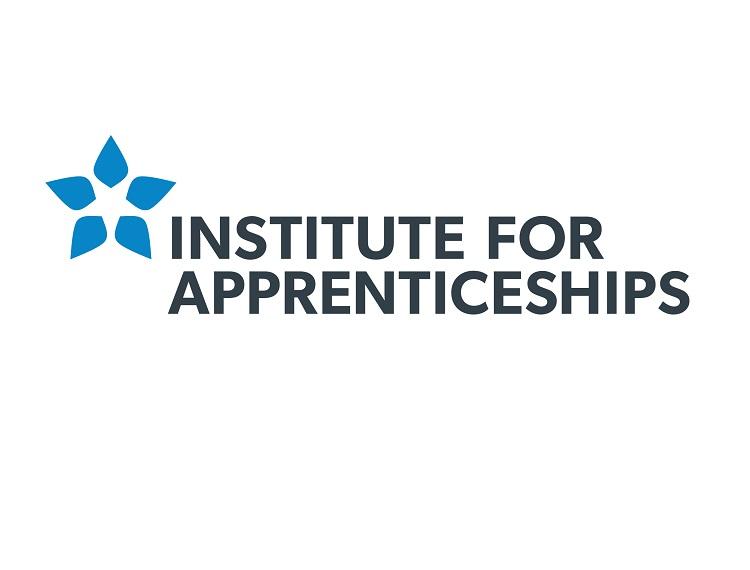Engineering fitter

Reference Number: ST0432
Details of standard
This occupation is found in manufacturing and process sectors.
The broad purpose of the occupation is to produce complex high value, low volume components or assemblies in full or part, using machines, equipment or systems, to the required specification. For example, turbines, cranes, gearboxes, production lines, rigs and platforms. Fitters may typically have a mechanical, electrical, electronic, control systems, pipe fitting or instrumentation bias or operate across multiple disciplines depending on the type of assembly. To produce or re-furbish the components fitters will interpret drawings/specifications and plan their work, for example ensuring they have the right tools, equipment and resources to complete the task to the required specification. Fitters are required to check their work against quality standards and make adjustments as required based on their knowledge. On completion of the task a fitter will hand over the product and prepare the work area for the next task by checking equipment meets the standards required to operate. They may be based in a workshop or clients premises – this may include hazardous environments.
In their daily work, an employee in this occupation typically interacts with line managers/supervisors; depending on the size of the employer and nature of the work they may work as part of a team of fitters or independently. They may interact with personnel in other functions for example installation and maintenance engineers, health & safety and quality assurance personnel, as well as internal or external customers.
An employee in this occupation will be responsible for completion of their work to the required specification and deadlines, in line with quality, health & safety and environmental regulations and requirements, with minimum supervision.
Typical job titles: Mechanical Fitter; Electrical Fitter; Electronic Fitter; Instrumentation Fitter; Pipe Fitter; Controls and Systems Fitter
| Duties | Criteria for measuring performance | KSB’s |
|
D1. Interpreting and following drawings/diagrams and/or specifications for required component or assembly |
|
K1,K2,K3,K4,K5,K6,K7,K8,K9,K10,K11,K12,K13,K14,K15, K17,K18 S1,S2,S3,S7, S9,S10,S11,S12,S14,S15 B1,B2,B3,B4 |
|
D2. Planning work activity, including resources, equipment and tooling |
|
K1,K2,K3,K4,K5,K6,K7,K8,K9,K10,K11,K12,K13,K14,K15,K16,K17,K18 S1,S2,S3,S4,S5,S6,S7,S8,S9,S10,S11,S12,S14,S15 B1,B2,B3,B4 |
|
D3. Producing individual components, for example keys, pipework, threading, wiring looms, interfacing parts, motors, wiring cables |
|
K1,K2,K3,K4,K5,K6,K7,K8,K9,K10,K11,K12,K13,K14,K15,K16,K17,K18 S1,S2,S3,S4,S5,S6,S7, S9,S10,S11,S12,S14,S15 B1,B2,B3,B4 |
|
D4. Re-furbishing components |
|
K1,K2,K3,K4,K5,K6,K7,K8,K9,K10,K11,K12,K13,K14,K15,K16,K17,K18 S1,S2,S3,S4,S5,S6,S7, S9,S10,S11,S12,S14,S15 B1,B2,B3,B4 |
|
D5. Assembling components to produce equipment, machine or system – in full or part |
|
K1,K2,K3,K4,K5,K6,K7,K8,K9,K10,K11,K12,K13,K14,K15,K16,K17,K18 S1,S2,S3,S4,S5,S6,S7,S9,S10,S11,S12,S14,S15 B1,B2,B3,B4 |
|
D6. Quality checking and adjusting components or assembly against required specification; for example testing and calibrating |
|
K3,K4,K5,K6,K7,K8,K9,K10,K11, K13,K14,K15,K16,K17,K18 S1,S2,S3,S4,S5,S6,S7,S8,S9,S10,S11,S12,S14,S15 B1,B2,B3,B4 |
|
D7. Identifying and resolving problems with components or assembly; fault diagnosis |
|
K1,K2,K3,K4,K5,K6,K7,K8,K9,K10,K12,K13,K14,K15,K16,K17,K18 S1,S2,S3,S4,S5,S6,S7,S8,S9,S10,S11,S12,S14,S15 B1,B2,B3,B4,B5 |
|
D8. Handing over completed components or assembly, this may include storage and commissioning |
|
K8,K10,K11,K12,K13,K14,K15,K17,K18 S1,S2,S3,S4,S5,S6,S7,S9,S10,S11,S12,S14,S15 B1,B2,B3,B4 |
|
D9. Re-instating work area and equipment |
|
K1,K2,K3,K4,K5,K6,K7,K8,K9,K10,K11,K12,K13,K14,K15,K16,K17,K18 S5,S12,S13,S14,S15 B1,B2,B3 |
|
D10. Contributing to continuous improvement in component production or assembly |
|
K1,K2,K4,K6,K7,K8,K9,K10,K11,K12,K13,K14,K16,K17,K18 S1,S2,S3,S4,S5,S6,S7,S8,S9,S10,S11,S12,S14,S15 B1,B2,B3,B4,B5 |
Knowledge, skills and behaviours
Knowledge
K1: Materials used in components/assemblies, for example; mild steel, aluminium, composites, copper etc. Their use and application considerations, for example machinability, hardness, conductivity, cost, availability, compatibility.
K2: Principles of design and operation, for example; design for cost, minimising waste, productivity (speed), health and safety, reverse engineering.
K3: Manufacturing and assembly processes for example; filing, sawing, scraping, drilling, soldering, bolting, wire cutting, threading etc
K4: Safe use of tools and equipment (hand and power tools); right tool for the job, requirements for machinery checks, adjustments, operation and shut down.
K5: Component/assembly specifications, for example; electrical loading, load charts, torque settings, tolerances. What they are and how to use them.
K6: Techniques for measuring, marking, cutting and drilling materials to the required size and shape, accurately, safely and economically and manufacturing processes.
K7: Engineering mathematical and scientific principles; methods, techniques, graphical expressions, symbols, formulae and calculations.
K8: Engineering data, for example; electrical readings, vibration, speed and calibration. What they are and how to interpret and use.
K9: Component/assembly documentation. For example, bill of materials, standard operating procedures, inspection records, assembly instructions, electrical/pneumatic/hydraulic circuit diagrams. What they are and how to interpret and use.
K10: Quality standards for components/assembly for example, drawing, calibration of equipment, materials specification. How to ensure they have been met and assured. Application of ISO9001 (Quality Management Standard) in the workplace.
K11: Health and safety, including Health & Safety at Work Act, personal protective equipment (PPE), manual handling, Control of Substances Hazardous to Health (COSHH), Provision and Use of Work Equipment Regulations (PUWER), Noise at Work Regulations, Electricity at Work regulations, risk assessments; how they must be applied in the workplace.
K12: Environmental considerations; safe disposal of waste, minimizing waste (re-use and re-cycle), energy efficiency.
K13: Who they need to communicate with and when, and communication techniques – verbal and written.
K14: Planning techniques – resources, tools, equipment, people; time management.
K15: Component/assembly quality checks for example; checking tolerances, threads, voltages. Types of faults that occur and problem solving techniques, for example; cause and effect, 5 Whys, flow process analysis etc.
K16: Improvement techniques, for example; 5s techniques, problem solving techniques, value stream mapping, kaizen, contributing to effective team working, Total Productive Maintenance.
K17: Fitters’ role in wider operation. Limits of autonomy; reporting channels. Other functions that fitters could interact with for example health & safety, quality assurance, business improvement/excellence, their purpose and interdependencies. Internal and external customers.
K18: Commercial considerations including contractual arrangements (for example penalty clauses, targets). How the role contributes to commercial operations.
Skills
S1: Reading, interpreting and understanding the component/assembly specification, diagrams, drawings and work instructions.
S2: Planning component/assembly task – materials, tools and equipment.
S3: Preparing work area for component/assembly task; sourcing required resources, tools/equipment.
S4: Using appropriate hand-fitting tools and techniques to assemble/dis-assemble for example filing, turning, milling, soldering, marking out, forming and measuring.
S5: Checking tools during and after task completion; identifying and reporting defects.
S6: Measuring and testing, checking/inspecting component/assembly for example; use of micrometers, verniers, multimeters, volt meter
S7: Problem solving; analysing the issue and fixing the issue where appropriate.
S8: Applying improvement techniques; recommending/implementing solutions where appropriate
S9: Communicating with colleagues and/or customers (internal or external).
S10: Completing component/assembly documentation for example job instructions, drawings, quality control documentation.
S11: Reporting work outcomes and/or issues.
S12: Restoring the work area on completion of the activity; returning any resources and consumables to the appropriate location and house-keeping.
S13: Disposing of waste in accordance with waste streams; re-cycling/re-using where appropriate.
S14: Operating within limits of responsibility.
S15: Operating in line with quality, health & safety and environmental policy and procedures; identifying risks and hazards and identifying control measure where applicable
Behaviours
B1: Takes personal responsibility and resilient. For example health and safety first attitude, disciplined and responsible approach to risk, works diligently regardless of how much they are being supervised, accepts responsibility for managing their own time and workload and stays motivated and committed when facing challenges.
B2: Works effectively in teams. For example integrates with the team, supports other people, considers implications of their own actions on other people and the business whilst working effectively to get the task completed.
B3: Effective communicator and personable. For example open and honest communicator; communicates clearly using appropriate methods, listens well to others and have a positive, respectful attitude, adjusts approach to take account of equality and diversity considerations.
B4: Focuses on quality and problem solving. For example follows instructions and guidance, demonstrates attention to detail, follows a logical approach to problem solving and seeks opportunities to improve quality, speed and efficiency.
B5: Committed to continuous personal development. For example reflects on skills, knowledge and behaviours and seeks opportunities to develop, adapts to different situations, environments or technologies and has a positive attitude to feedback and advice.
Typical duration of apprenticeship (months)
42 months
Occupational Level
3
English and Maths qualifications – Level 3 and above apprenticeships
Apprentices without level 2 English and maths will need to achieve this level prior to taking the End-Point Assessment. For those with an education, health and care plan or a legacy statement, the apprenticeship’s English and maths minimum requirement is Entry Level 3. A British Sign Language (BSL) qualification is an alternative to the English qualification for those whose primary language is BSL.
Mandatory Qualification 1 – Type 2 off the job qualification
Title
Advanced Manufacturing Engineering (Development Knowledge) – Awarding organization EAL; GLH 750, this qualification ensures full knowledge to complete the fitting role.
Level of qualification – 3
Ofqual regulated – Yes
Qualification number (QAN) – 603/1353/5
Or
Mandatory Qualification 2 – Type 2 off the job qualification
Title
Advanced Manufacturing Engineering (Development Technical Knowledge) – Awarding organization Pearsons; GLH 720 – this qualification ensures full knowledge to complete the fitting role.
Level of qualification – 3
Ofqual regulated – Yes
Qualification number (QAN) – 601/9054/1
Health and Safety Requirement
All learning will need to comply with statutory regulations and organisational safety requirements in the relevant sector.
Entry Requirements
There are no statutory/regulatory or other typical entry requirements.
Professional Recognition
Professional Body – IET
Level – Eng Tech
Review of Standard – This standard will be reviewed every 3 years
Crown copyright © 2017. You may re-use this information (not including logos) free of charge in any format or medium, under the terms of the Open Government Licence. Visit www.nationalarchives.gov.uk/doc/open-government-licence











Responses